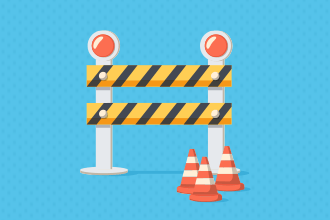
- >
- Workflow Platform >
- The Secret to Powerful & Efficient Pharmacy Workflows
The Secret to Powerful & Efficient Pharmacy Workflows
In an increasingly competitive environment, pharmacies are looking for ways to decrease costs and increase patient care, which means they can’t afford high overhead costs or inefficiencies in their processes.
Digitization and workflow automation are no longer options–they are necessities to stay relevant. Maintaining accuracy, accountability and compliance is incredibly important for pharmacies. The right pharmacy workflow automation software can help streamline internal processes, improve efficiency, and help pharmacies provide better services to their customers.

What is Pharmacy Workflow?
Pharmacy workflow refers to the organized and streamlined processes pharmacists follow to efficiently manage prescription dispensing, medication storage, patient counseling, and other related tasks. This workflow ensures accuracy, safety, and compliance with regulations while also improving the overall efficiency of the pharmacy. It typically includes receiving prescriptions, verifying patient information, checking for drug interactions, preparing and dispensing medications, and providing patient education. For pharmacies aiming to digitize processes securely and efficiently, adopting the right business workflow management software is key to ensuring compliance, speed, and accuracy.Learn why pharmacies need to digitize processes with workflow automation software like Kissflow workflow software.
The Challenges of Paper-Based or Manual Workflows in Pharmacies
Modern pharmacies are expected to deliver fast, efficient, and error-free service. However, many still need to rely on traditional paper-based or manual workflows, posing several challenges.
Here are some of the most significant issues:
Lack of Visibility
Getting an overview of all transactions, prescriptions, and patient records is difficult with physical documents. This lack of transparency makes it harder to manage inventories, track orders, and monitor overall pharmacy performance. It also hinders effective communication between pharmacists, pharmacy technicians, and customers.
Prone to Errors
Manual workflows are highly prone to human errors. A misplaced decimal point in a prescription dosage or misread handwriting can lead to serious consequences. In addition, keeping track of stock manually can result in inaccurate inventory levels. These errors can affect the pharmacy's efficiency and also compromise patient safety.
Inefficiency
Paper-based systems are time-consuming and inefficient. Pharmacists and their staff spend significant time filling out forms, deciphering prescriptions, and manually entering data. This diverts their attention from more important tasks like patient counseling and medication management. Furthermore, manual processes slow the workflow, leading to longer customer waiting times.
Inadequate Security and Privacy
Paper-based systems pose a significant risk to patient privacy. Physical documents can easily be accessed, lost, or stolen, leading to potential breaches of sensitive patient information. Furthermore, it's challenging to ensure the confidentiality of information when it's scribbled on a piece of paper rather than securely encrypted in a digital database.
Difficulty in Compliance and Reporting
Pharmacies are subject to stringent regulations and must maintain detailed records for compliance purposes. With a manual system, generating necessary reports and auditing trails can be a painstaking process. Keeping records up-to-date also requires more work, which could lead to non-compliance with regulations and potential legal consequences.
Learn more: Enterprise automation platform
The Benefits of Pharmacy Workflow Automation
Pharmacy workflow automation is a game-changer in the pharmaceutical industry. It offers numerous benefits that can improve a pharmacy's efficiency, accuracy, and service delivery.
Here are some of the key advantages:
Enhanced Efficiency
Automation streamlines the operations of a pharmacy by reducing manual tasks. This allows pharmacists to focus on their core duties, like patient counselling and medication management. Automated systems can manage prescriptions, track inventory, and even fill medications, freeing up time for pharmacists.
Improved Accuracy
Automated systems significantly reduce the risk of human error. They ensure that prescriptions are filled correctly, dosages are accurate, and medication interactions are checked automatically. This leads to safer outcomes for patients and less liability for pharmacies.
Better Inventory Management
Pharmacy automation includes sophisticated inventory management systems. These systems accurately track stock levels, automate reordering processes, and help prevent both understocking and overstocking. This results in cost savings and better service delivery.
Superior Patient Service
With less time spent on administrative tasks, pharmacists have more time to provide personalized care to patients. Automated systems can also improve the customer experience by reducing waiting times and ensuring the availability of prescribed medications.
Compliance and Reporting Made Easy
Automated workflows make it easier to generate necessary reports and maintain records for compliance purposes. They can quickly produce audit trails and ensure the pharmacy meets all regulatory requirements.
Enhanced Data Security
Digital systems provide better security than paper-based ones. They use encryption and other security measures to protect sensitive patient information. This helps pharmacies maintain patient trust and comply with privacy regulations.
Pharmacy Workflows That Should Be Automated
Pharmacy workflow automation can significantly enhance efficiency, reduce errors, and improve patient service.
Here are some examples of pharmacy workflows that can greatly benefit from automation:
Medication Pickup
The process of medication pickup is ripe for automation. With an automated system, patients can be notified via text or email when their prescriptions are ready for pick-up. Some pharmacies even use automated dispensing machines where patients can retrieve their medications using a secure code, reducing waiting times and allowing pharmacy staff to focus on more critical tasks.
Prescription Dispensing
Automating the prescription dispensing process can dramatically increase accuracy and efficiency. Automated dispensing systems can fill, label, and cap prescription vials, eliminating human error and speeding up the process. These systems also double-check each prescription against the original order to ensure accuracy.
Patient Check-In
Automating the patient check-in process can enhance the patient experience and streamline operations. Patients can use self-service kiosks or mobile apps to check in, update their information, and confirm their prescriptions. This reduces wait times and ensures that patient records are up-to-date and accurate.
Elements of a Good Pharmacy Workflow
A well-designed pharmacy workflow is crucial for efficient operations, accuracy, and superior patient service.
Here are some key elements that make up a good pharmacy workflow:
Clear Task Segmentation
Each step in the workflow, from prescription intake to medication dispensing, should be clearly defined. This ensures that each task is handled systematically and reduces the chance of errors.
Efficient Space Utilization
The physical layout of the pharmacy should facilitate the workflow. The workspace should be organized logically, with related tasks clustered together to minimize unnecessary movement and enhance efficiency.
Use of Technology
Leveraging technology like automated dispensing systems, electronic health records, and digital inventory management can significantly streamline operations and improve accuracy.
Role Clarity
Each team member should clearly understand their roles and responsibilities within the workflow. This prevents confusion and ensures that all tasks are adequately covered.
Standard Operating Procedures (SOPs)
SOPs provide a guideline for routine tasks and ensure consistency in operations. It also helps in training new staff members and maintaining quality standards.
Patient-Centric Approach
The workflow should prioritize patient needs. This includes minimizing wait times, ensuring privacy, and providing personalized care. A good workflow should also facilitate effective communication with patients.
Regular Evaluation and Improvement
A good pharmacy workflow is not static. It should be regularly evaluated and adjusted based on feedback from staff and patients, changes in demand, or the introduction of new technologies.
Tips to Improve Your Pharmacy Workflows Using Kissflow
Kissflow is a powerful workflow automation tool that can greatly enhance your pharmacy's efficiency, accuracy, and service delivery.
Here are some tips on how to improve your pharmacy workflows using Kissflow:
Automate Routine Tasks
Use Kissflow to automate routine tasks such as prescription refills, inventory reordering, and patient notifications. This reduces manual work, speeds up operations, and minimizes errors.
Optimize Inventory Management
Use Kissflow's workflow automation to optimize inventory management. The system can track stock levels in real-time, automate reordering processes, and send alerts for low stock levels or expired medications.
Facilitate Communication
Kissflow can facilitate communication within the pharmacy team by creating a centralized platform for task assignments, updates, and alerts. It can also be used to communicate with patients, sending automated reminders for prescription pick-ups or refills.
Monitor Performance
Use Kissflow's reporting features to monitor the performance of your pharmacy. You can track key metrics like prescription fill times, patient wait times, and inventory turnover rate to identify areas for improvement.
Continuously Adapt and Improve
Finally, use the insights from Kissflow to adapt and improve your workflows. The platform allows for easy modification of workflows, enabling you to adjust processes based on feedback or changing needs.
Learn more: Hyperautomation software
Leverage Kissflow for Smarter Pharmacy Operations
Kissflow is an intuitive, no-code workflow automation platform to simplify and streamline pharmacy operations. With its user-friendly interface and many templates, you can effortlessly create workflows tailored to your specific needs.
The platform's visual editor makes designing workflows a breeze, eliminating the need for technical expertise. Whether prescription handling or inventory management, you can visually map out each process step, ensuring clarity and efficiency. But that's not all. Kissflow's seamless integration capabilities mean you can connect it with your existing third-party applications, creating a unified, efficient system that works in harmony.
Procurement processes, often challenging in pharmacies, can also be streamlined with Kissflow. From order placement to delivery tracking, every step can be automated, saving valuable time and reducing errors.
Informed decision-making is crucial in any pharmacy. With Kissflow's real-time analytics, you can monitor key performance metrics and make data-driven decisions. You can also identify bottlenecks, track progress, and continually optimize your workflows for better results.
Moreover, Kissflow understands the importance of security. Its access control feature lets you define who can view and edit workflows, ensuring sensitive information remains confidential. Best of all, you won't need hours to set this up.
In just 15 minutes, you can automate a workflow on Kissflow and start reaping the benefits.
Automate Your Pharmacy Workflows with Kissflow in <15 Minutes
Related Articles











